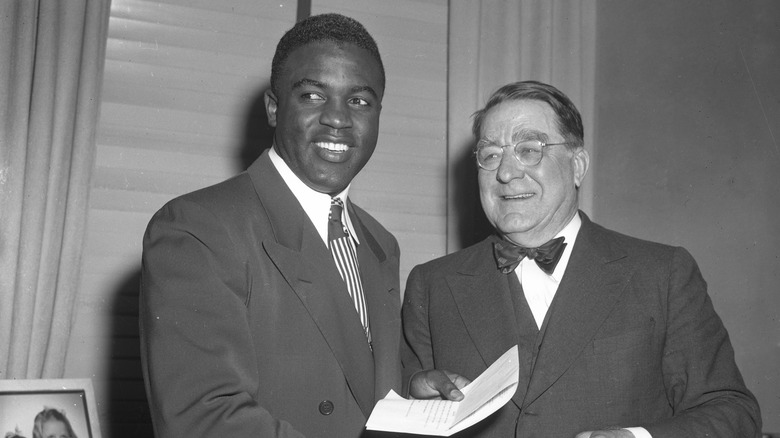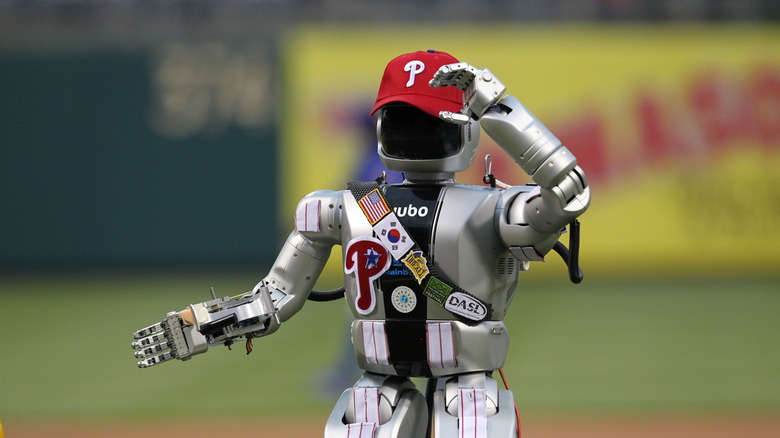The First Electronic Umpire In Baseball Was Used A Lot Earlier Than You Think
The controversy over robotic umpires continues to sweep baseball fields across America. Those who are against them often argue from a sense of misty-eyed nostalgia. Although fumbling umpires are an age-old institution, robot umpires actually have a long history.
The quest to rule out human error in baseball is far older than the doppler radar technology used today (via CBS Sports). One of the earliest attempts came from the brain of Guy T. Luntsford of Johnson City, Tennessee (via The Evening Star). Built in 1936, Luntsford's robotic umpire used photoelectric cells to alert players to a strike via a gong. Newspapers from the time reported that Luntsford was seeking a patent for his invention, but his device clearly never caught on — if it worked at all.
Another similar contraption was reported just two years later in 1938 (via The Spokesman Review) when a patent was offered to John Oram of Dallas, Texas. This robot used photoelectric cells and a series of mirrors. The invention was designed to be placed next to first base, and (at least in theory) it would have produced a system of horizontal and vertical lights that overlapped to create the strike zone.
Robots of the 1950s
The robot umpire's first great trial debut was thanks to the major league team, the Brooklyn Dodgers (via The New York Times). As with past experiments, this robot used photoelectric cells and mirrors. However, it wasn't built in somebody's basement but rather by General Electric at the behest of Branch Rickey, president of the Dodgers.
Although it was tested during the team's spring training in 1950, Rickey had no confidence that the machine would make a suitable replacement for a human umpire during an actual game. According to an interview with the Dodger's shortstop, at least once the machine incorrectly signaled a strike. The use of the invention appears to have died not long after.
In 1955, another device was also beta tested (via Old Time Family Baseball). According to the patent, this version made use of multiple mounted cameras, which could, in theory, capture the desired moment in a freeze frame (via Google Patents), a setup that resembles a primitive version of the Hawk-eye camera system used in cricket matches since 2001 as a supplementary digital umpire (via the BBC).
Old controversies
Disputes over the use of new-fangled technology in the baseball world are as old as the experiments themselves. In 1938, Bill McGowen, then an umpiring giant, gave an interview with the Reading Eagle, in which he complained about the potential use of robots in the sport. He believed that no machine would ever be able to accurately judge some of the more subtle aspects of the game. He dramatically declared, "Science may make a mechanical man, but it will never turn out an umpire."
Similarly, after a robot umpire was tested by a Pacific Coast League in 1955, a reporter working at Mount Airy News snidely wrote that the use of a robot umpire would take much of the drama and excitement out of the game — a sentiment echoed by some contemporary commentators today who enjoy the shouting matches caused by disputes (via the National Review). The article stated, " ... the electronic umpire is great as a symbol of achievement. For our brand of baseball, however, we will take human beings, mistakes and all."


